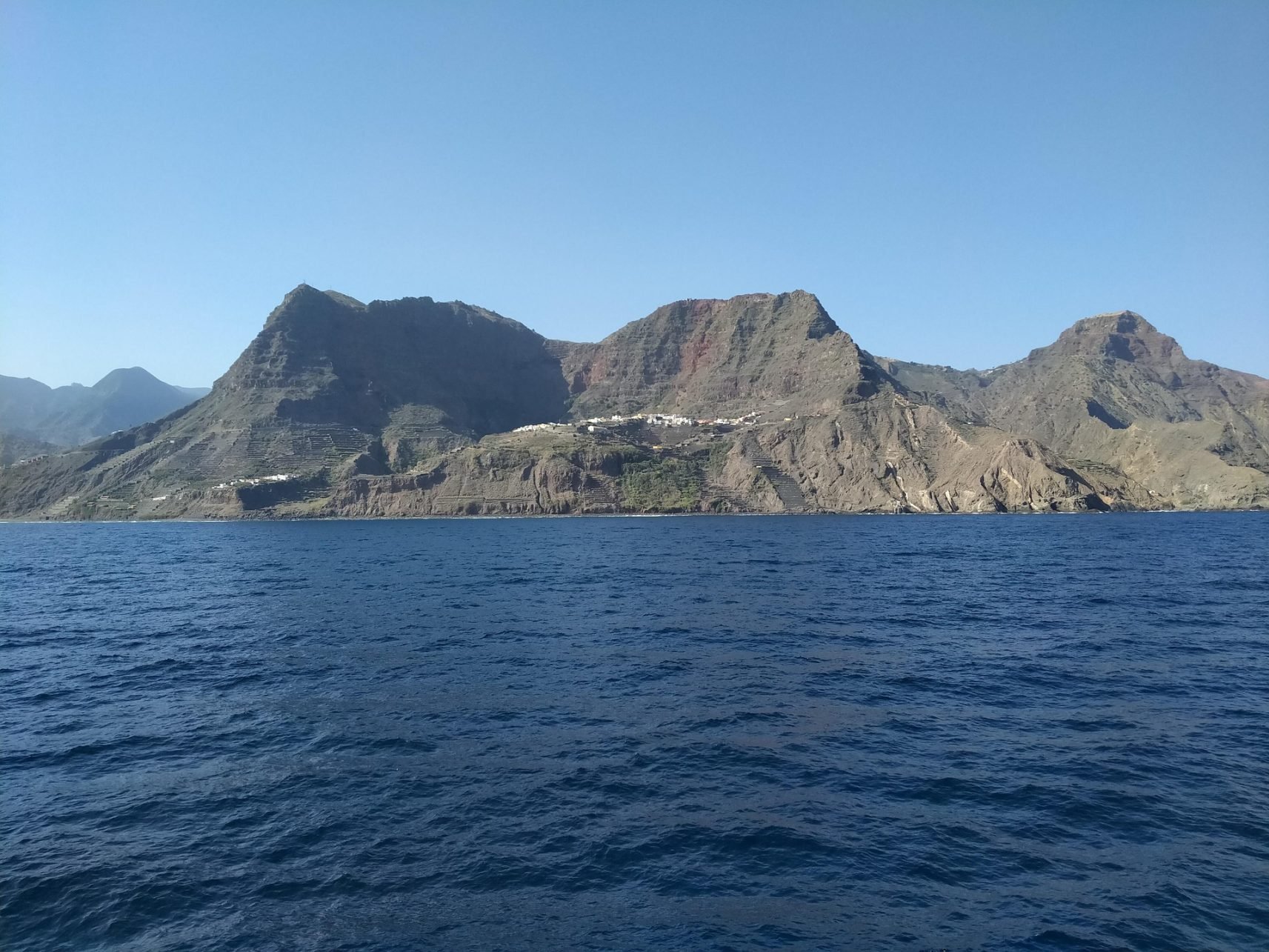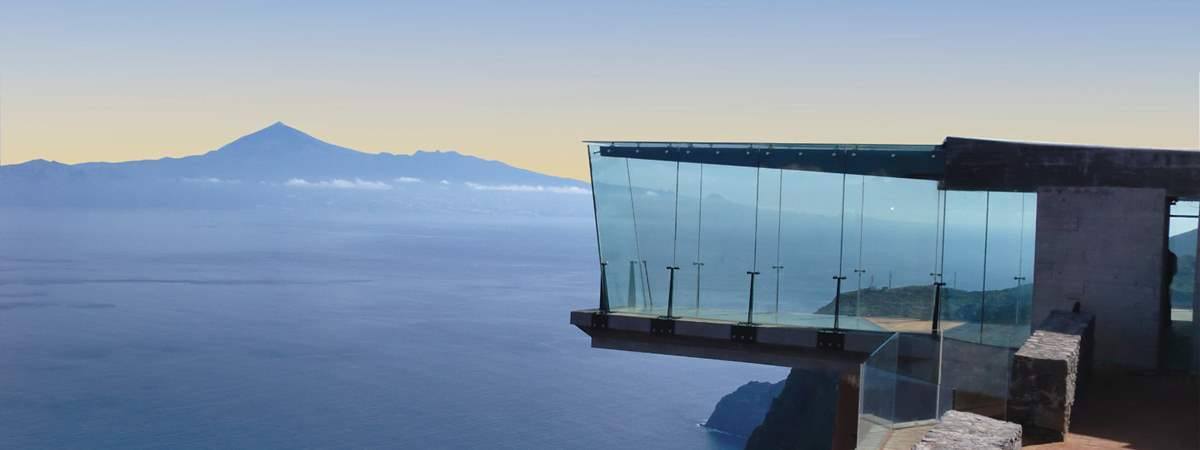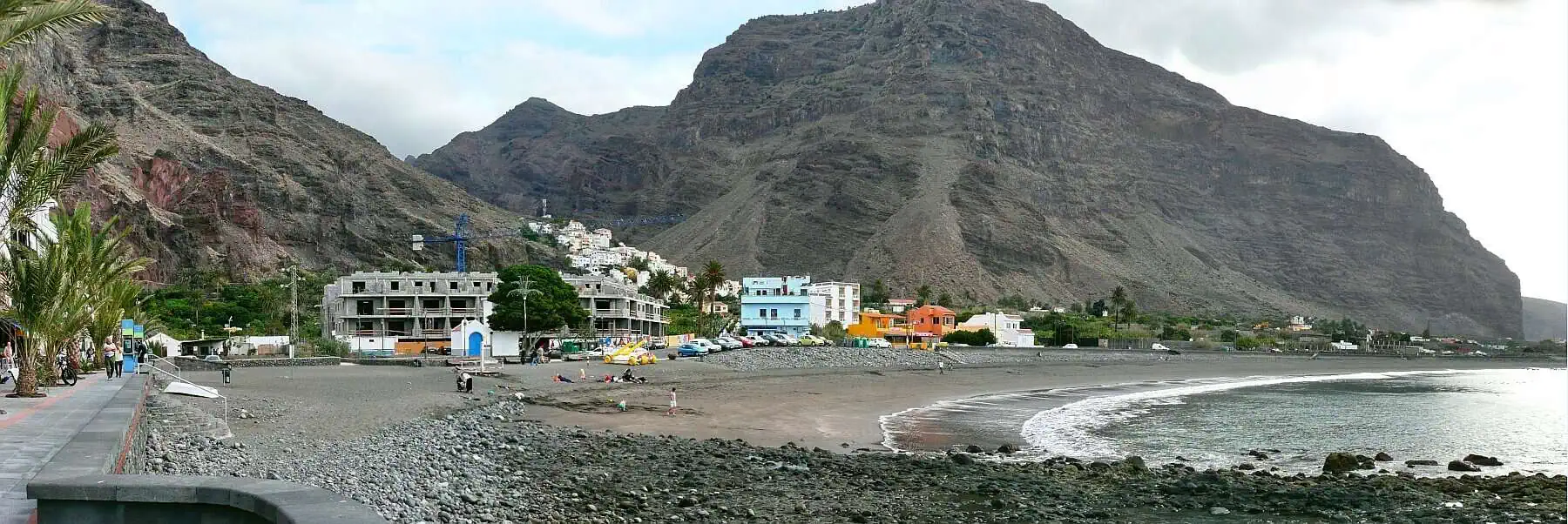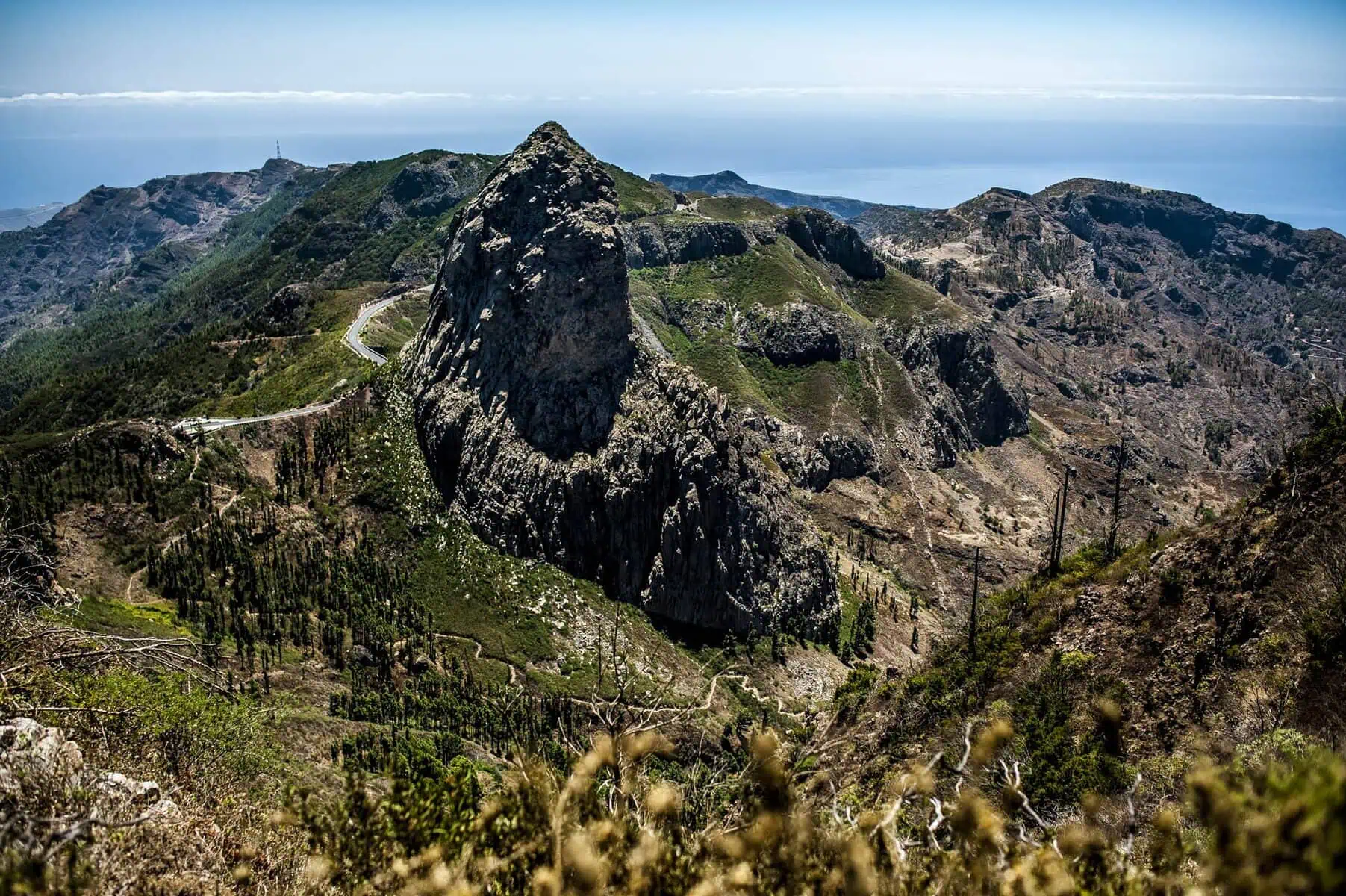This UNESCO Biosphere Reserve, known as “Columbus’s last stop before America,” presents a dramatically different landscape from its larger neighbor – Ancient laurel forests, mystical valleys, and cultural traditions that have survived for centuries.
Just 50 minutes by ferry from Tenerife’s Los Cristianos port, La Gomera offers one of the most rewarding day trip experiences in the Canary Islands.
Ferry connections operate multiple times daily with Fred Olsen Express and Naviera Armas, departing at 9:00 AM, 2:30 PM, and 6:30 PM, with return journeys providing flexible scheduling for day trips. Round-trip tickets start at €43 per person, with car transport available from €21, though most day-trippers find the island easily explorable on foot and via organized tours.
Read as well our complete guide for day trips in Tenerife.

Garajonay National Park: Ancient Laurel Forest Experience
The crown jewel of La Gomera, Garajonay National Park protects one of the world’s last remaining laurel forests, a prehistoric ecosystem that once covered much of Mediterranean Europe. These ancient woods, shrouded in mystical mists, create an almost Jurassic atmosphere where endemic species thrive in humidity levels reaching 80%.
Guided hiking tours through the park provide the safest and most educational experience, with local experts explaining the complex ecosystem while navigating the well-marked but sometimes challenging trails. Half-day guided hikes cost €45-65 per person and include hotel pickup from San Sebastián, professional interpretation, and visits to the park’s Visitor Center near Cruz del Carmen.
The Alto de Garajonay summit, at 1,487 meters, offers panoramic views across the entire archipelago on clear days. The challenging Gran Ruta 18 circuit hike covers 17 kilometers and takes approximately 6 hours, making it suitable only for experienced hikers with proper equipment. For day-trippers, the shorter Sendero El Cedro trail provides excellent forest immersion in just 2-3 hours.
Practical note: The laurel forest creates its own microclimate with frequent mist and sudden temperature changes. Waterproof clothing and layered clothing are essential, even during summer months.
Mirador de Abrante: Walking on Air
One of La Gomera’s most spectacular attractions, the Mirador de Abrante features a dramatic glass walkway extending 7 meters over a 600-meter precipice. This architectural marvel, opened in 2014, creates the sensation of floating in mid-air while offering panoramic views of the picturesque village of Agulo below and Tenerife’s Mount Teide on the horizon.
The glass-floored skywalk provides 360-degree views, with the transparent floor allowing visitors to see directly down to Agulo’s traditional stone houses and terraced landscapes. Entry costs €3 for the viewpoint, with the adjacent restaurant offering local cuisine (though currently closed as of 2022).
Access requires a narrow, winding mountain road from the main highway, adding adventure to the visit. The drive takes approximately 20 minutes from the park’s main visitor center, with adequate parking available at the site. The viewpoint operates Tuesday-Sunday from 10:00 AM to 4:00 PM.
Photography tip: Visit during golden hour for the most dramatic lighting, when the red volcanic cliffs contrast beautifully with the green valley below and the blue Atlantic beyond.

Silbo Gomero: The Whistling Language Demonstration
La Gomera preserves one of the world’s most unique communication systems: Silbo Gomero, a whistled language declared UNESCO Intangible Cultural Heritage in 2009. This ancient system, used for centuries to communicate across the island’s deep valleys and ravines, can transmit messages up to 4 kilometers.
Live demonstrations are regularly performed at various locations, including the Abrante Viewpoint, Garajonay National Park visitor centers, and San Sebastián’s town square. Professional silbadores (whistlers) demonstrate how Spanish words are converted into whistled sounds using just two vowel tones and four consonant sounds, with meaning clarified through pitch, duration, and context.
School visits can be arranged through the La Gomera Whistled Language School (Aula Insular del Silbo Gomero), where this unique skill is taught as a compulsory subject to all island children. These educational sessions cost €8-12 per person and provide hands-on instruction in basic whistling techniques.
Cultural significance: Today, over 20,000 La Gomera residents can communicate in Silbo Gomero, using it for practical daily communication, emergency situations, and maintaining cultural identity. Visitors often witness spontaneous whistled conversations between locals across valleys during their visit.
El Cercado: Traditional Pottery Village
Hidden in La Gomera’s highlands, El Cercado maintains one of the Canary Islands’ last authentic pottery traditions, with techniques virtually unchanged since pre-Hispanic times. Only three workshops continue this ancient craft, run exclusively by women who pass skills from mothers to daughters across generations.
Live demonstrations show master potters creating traditional pieces entirely by hand without pottery wheels, using only local clay, sand, and almagre (red ochre) for the characteristic finish. The month-long process from clay preparation to wood-fired completion creates utilitarian pieces like gofio storage bowls, water jugs, and the distinctive carabucho (goat milking vessel).
Las Loceras Interpretation Center in El Cercado’s village square provides historical context through exhibits and displays, operating Tuesday-Sunday 10:00 AM-2:00 PM with free admission. Visitors can purchase authentic pottery pieces directly from the workshops, with prices ranging from €15-45 for traditional items.
Workshop visits require advance booking during peak tourist seasons, as the three remaining loceras (pottery women) balance traditional production with tourist demonstrations. The village’s isolated location, reached via mountain roads through terraced landscapes, adds to its authentic rural atmosphere.
Valle Gran Rey: Natural Swimming and Coastal Beauty
La Gomera’s largest town, Valle Gran Rey, offers perfect relaxation after cultural and hiking activities. The valley’s Charco del Conde natural swimming pool, formed by volcanic rock and filled with crystal-clear seawater, provides safe swimming protected from Atlantic swells.
Playa de la Calera, the municipality’s largest beach, features black volcanic sand and calm waters ideal for swimming and sunbathing. The beachfront promenade offers numerous restaurants serving fresh seafood and traditional Gomeran cuisine, including locally caught fish and almogrote cheese spread.
Whale watching excursions depart from Valle Gran Rey’s small harbor, offering different perspectives of La Gomera’s dramatic coastline while searching for pilot whales, dolphins, and sea turtles in the surrounding waters. These 3-hour trips cost €35-45 per person and include swimming stops in secluded bays with complimentary refreshments.

Planning Your La Gomera Day Trip
Recommended schedule: Depart Tenerife on the 9:00 AM ferry, arriving in San Sebastián de La Gomera at 9:50 AM. Join organized tours departing at 10:30 AM, or rent a car at the port for independent exploration. Return on the 6:30 PM ferry for a full day experience, or the 2:30 PM ferry for a more relaxed half-day visit.
Independent exploration offers a flexibility but requires careful timing with ferry schedules and mountain road conditions. Car rental at San Sebastián port costs €35-50 per day, with fuel and insurance included. The island’s compact size (25km x 22km) makes all major attractions accessible within 45 minutes of driving.
Cultural immersion: La Gomera rewards those seeking authentic Canarian culture away from resort tourism. Traditional guachinches in Valle Gran Rey serve local wines and island specialties, while village markets offer handmade crafts and locally produced honey, cheese, and mojo sauces. The island’s slower pace of life and genuine local hospitality create lasting impressions beyond typical day-trip experiences.
This neighbor island experience perfectly complements a Tenerife vacation, offering dramatic landscape contrasts, unique cultural encounters, and the satisfaction of discovering one of Europe’s best-preserved traditional island communities.
After a successful day trip to La Gomera, it’s no surprise that you might book your next whole vacation there.


